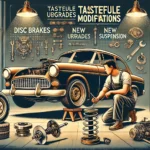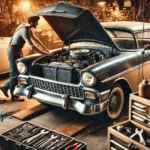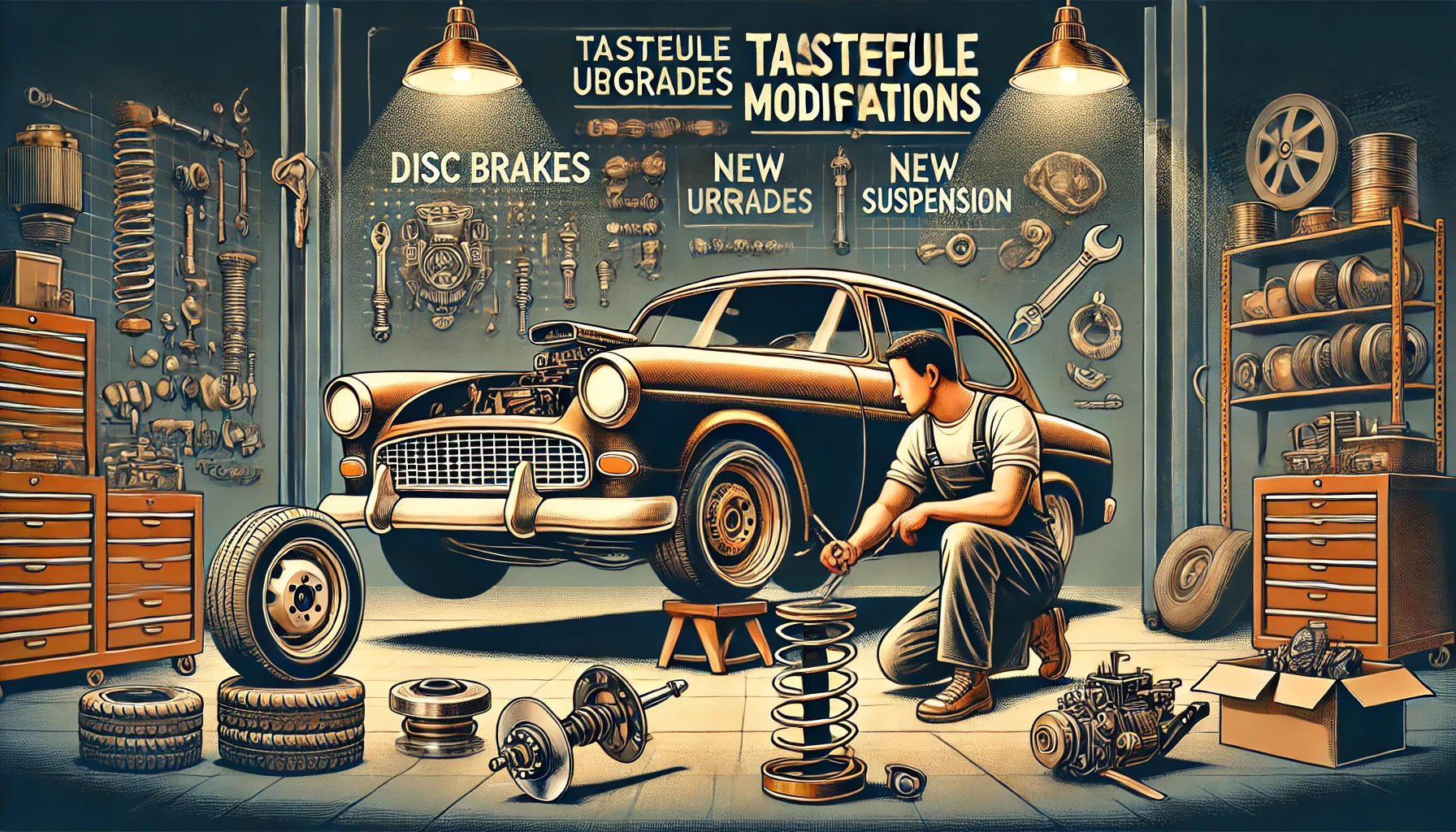Modifying a classic car is a great way to enhance performance, comfort, and drivability. However, making the wrong changes can significantly reduce the car’s value, especially for collectors. The key is finding a balance between modernization and preserving the car’s originality. In this guide, we’ll explore how to tastefully modify a classic car without compromising its worth.
1. Understand Your Car’s Value Before Modifying
Before making any changes, assess the car’s current market value and historical significance.
📜 Original vs. Modified Value: Cars with matching numbers (original engine and chassis) typically hold more value than heavily modified ones.
🏆 Collector vs. Driver’s Car: If the car is rare or highly collectible, keeping it original is often the best choice. However, if it’s a common model, tasteful modifications may enhance its appeal.
🔎 Research Market Trends: Some modifications, like disc brakes or suspension upgrades, can increase value, while others, like extreme body kits, may lower it.
Pro Tip: Consult classic car forums or experts to see how modifications have affected similar models.
2. Keep All Original Parts for Future Restoration
If you plan to modify your car, never throw away the original parts. Many collectors prefer factory parts, and keeping them will allow you to revert the car to its original state if needed.
📦 Store Removed Parts Properly: Keep original components like carburetors, exhaust systems, and wheels in a safe, dry place.
🔄 Use Bolt-On Mods When Possible: Choose upgrades that can be easily reversed, such as aftermarket wheels or bolt-on engine components.
Pro Tip: Label and document all removed parts to make future restoration easier.
3. Performance Upgrades That Preserve Value
Enhancing a classic car’s performance can make it more enjoyable to drive while maintaining or even increasing its worth.
⚙ Engine Upgrades:
✔ Install a modern carburetor or EFI (electronic fuel injection) for better efficiency.
✔ Upgrade ignition systems with electronic distributors for improved reliability.
✔ Use a high-performance radiator to prevent overheating.
🛑 Braking System:
✔ Convert drum brakes to disc brakes for better stopping power.
✔ Use stainless steel brake lines for durability.
🚗 Suspension & Handling:
✔ Install modern shocks and bushings for a smoother ride.
✔ Upgrade sway bars and control arms to improve cornering without changing the car’s appearance.
Pro Tip: Avoid swapping in an entirely different engine unless it’s a restomod project designed for modern performance.
4. Interior Modifications That Retain Classic Appeal
A well-preserved interior adds to a classic car’s charm, but some upgrades can enhance comfort and usability.
🛠 Recommended Interior Upgrades:
✔ Install modern soundproofing to reduce cabin noise.
✔ Use period-correct seat covers and materials for a fresh look.
✔ Upgrade the stereo system with a hidden Bluetooth unit to maintain the vintage aesthetic.
⚠ What to Avoid:
❌ Removing original dashboard components—factory gauges and controls are valuable.
❌ Cutting the dashboard for modern infotainment systems—use hidden or removable options instead.
Pro Tip: If you install aftermarket gauges, mount them in a way that doesn’t damage the original dash.
5. Exterior Mods That Enhance Style Without Ruining Value
Tasteful exterior modifications can improve a car’s appearance while maintaining its classic character.
✅ Recommended Changes:
✔ Period-correct wheels and tires that improve performance without looking out of place.
✔ High-quality repainting in the original or period-correct color.
✔ LED bulbs in stock housings for better visibility.
🚫 Modifications That Decrease Value:
❌ Large, flashy body kits that change the car’s original lines.
❌ Overly aggressive lowering or wide-body conversions.
Pro Tip: If you must repaint the car, stick to factory-correct colors to preserve authenticity.
6. Modern Convenience Upgrades That Don’t Compromise Value
Some modern touches can make driving a classic car more enjoyable without affecting its originality.
🔌 Best Modern Additions:
✔ Air conditioning retrofits that blend seamlessly into the original dashboard.
✔ Power steering upgrades for easier maneuverability.
✔ Modern fuel pumps or ignition systems that enhance reliability.
⚠ Upgrades to Avoid:
❌ Digital dashboards that eliminate the vintage look.
❌ Excessive electronics that take away from the classic driving experience.
Pro Tip: Many companies make modern components that look period-correct, preserving the vintage aesthetic while improving functionality.
7. Document Every Modification
Keeping a detailed record of your modifications will help maintain value and attract buyers if you ever decide to sell.
📑 Maintain a Modification Log:
✔ List every upgrade, including brand and installation date.
✔ Keep receipts for major modifications.
✔ Take before-and-after photos for historical documentation.
Pro Tip: If you plan to sell the car, offer buyers the option to revert to original parts.
8. Should You Consider a Restomod?
A restomod (restoration + modern technology) is a modified classic car designed for modern performance, often featuring:
🔥 Modern drivetrain swaps (e.g., LS swaps in muscle cars).
🛠 High-tech suspension and braking systems.
🎵 Custom interiors with digital features.
Restomods are great for personal enjoyment, but they appeal to a different market than original classics.
Pro Tip: If going the restomod route, ensure modifications are high-quality and professionally done to retain value.
Final Thoughts: Finding the Right Balance
Modifying a classic car can enhance its drivability, comfort, and style—but it’s important to do it in a way that preserves its value. Stick to reversible upgrades, keep original parts, and focus on period-correct modifications that complement the car’s history.
With careful planning, you can enjoy a personalized classic car without sacrificing its timeless appeal!








